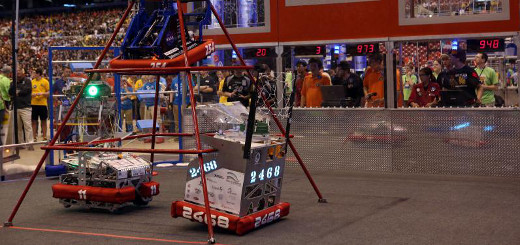AUVSI show plays host to unmanned systems debate
The variety of images that might surface in one’s mind when someone utters the term “robotics” has exploded in recent years – from autonomous vacuum cleaners to spinal surgery systems to military-grade explosive disposal solutions. For some, however, the term conjures something darker: a landscape of pervasive airborne surveillance, so-called “drones” keeping tabs on average citizens in a mobile, autonomous and thereby more malevolent version of the type of CCTV culture that has been a talking point in the United Kingdom for decades.
Those fears grossly exaggerate both the way unmanned aerial vehicles actually function and the type of usage that would result from any current (or even proposed) legislation in the U.S., but the passion the technology evokes is undeniable. And while a recent poll showed that many Americans are open to the idea of UAVs being used domestically in certain contexts, it also showed that education is lacking and many have concerns about privacy issues as well as whether the government can be trusted to use UAVs appropriately.
Within that environment, the Association for Unmanned Vehicle Systems International hosted its annual conference last week in Washington, D.C., where — beyond the usual bevy of announcements and product demonstrations — it played host to a broad range of opinions on how best to regulate and otherwise respond to the increasing capabilities and presence of surveillance-oriented UAVs.
Perhaps the most visible marker of public concern over “drone” usage was the presence of numerous demonstrators from organizations such as Code Pink, protesting both weaponized UAV usage abroad and the potential for domestic surveillance as detailed in the Washington Times.
The demonstrators outside the convention were not alone in voicing their concern with the potential of UAV-based surveillance, however. Inside the doors a more staid discussion of precisely the same question was spurred by the Aerospace States Association, an organization of lieutenant governors and other delegates from states with significant aerospace industry presence. The ASA in collaboration with the Council of State Governments and the National Conference of State Legislatures has presented the robotics industry with a document titled “UAS State Privacy Consideration,” what it terms a “Privacy Legislation Plan” aimed at outlining through the aggregation of submitted statements from “UAS privacy stakeholder associations” recommendations regarding the extent of acceptable domestic usage of UAVs. The objective of this document is “to provide privacy protection while allowing the use of UAS to achieve UAS’ many benefits” – that is, to openly discuss both risks and advantages inherent in the increasing design, manufacture and deployment of UAVs – in order to provide guidance to states currently considering legislation on the subject.
While the wary side of the ASA’s recommendations no doubt struck a chord with some, the economic rewards it highlights (detailed in what the ASA has termed “conservative” language in this AUVSI report) have drawn no less attention as last week’s conference also played host to a number of state representatives actively seeking the kind of job production a healthy robotics-industry presence brings with it. One of the most sought-after prizes currently up for grabs is selection as one of six forthcoming Federal Aviation Administration-approved test zones for unmanned aircraft, applicants for which include places as wide-ranging as Utah and southern California.
With a Congressionally mandated deadline for integrating UAVs into the national airspace looming in 2015, these conversations are likely to continue for some time to come. In a recent interview with The Business of Robotics, AUVSI president and CEO Michael Toscano said the debate over unmanned systems is a part of the process as people become educated about UAVs and we collectively decide how best to utilize them.
“It is an important issue, it’s an important concern that we have to deal with, because as you deploy this technology for the most part people are going to use it in a very responsible way,” he said. “But there are some people that might not.”



